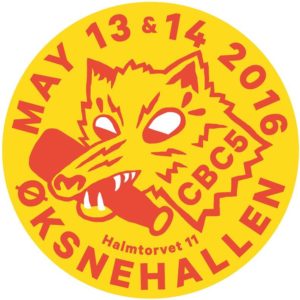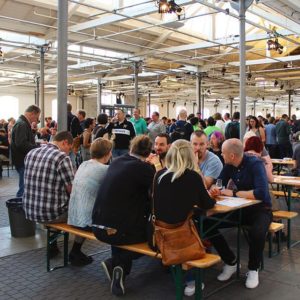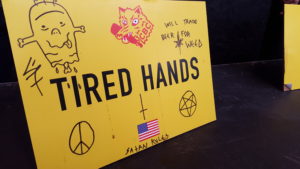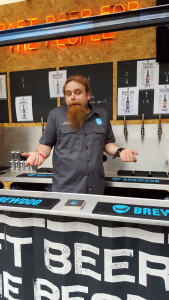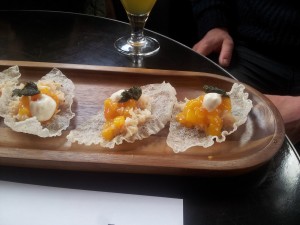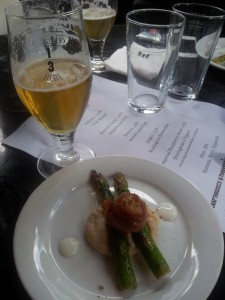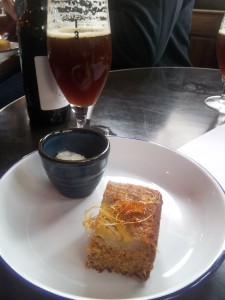It struck me that we in the UK hadn’t had the navel-gazing debate of what constitutes “craft beer” for a while, so I, while quite literally gazing at my navel in the shower, had a revelation.
Would a definition of a “craft brewery” be one that is allowed to make mistakes and not be lambasted or lampooned for it? Would such a definition allow for the creativity, openness and experimentation inherent in bringing an industry forward, which is what craft beer at its best does?
Hear me out on this.
I’ll break this down into three categories, in which errors and how they are both managed and perceived play a role. These are Openness, Experimentation and Authenticity of Voice.
Let’s treat these in turn.
Openness
As per Jonny’s excellent post on social media employed by UK breweries, openness is a huge selling point for the smaller breweries gaining respect and retaining traction. When things don’t go to plan, openly communicating it and taking the financial hit of any recalls or reclamations proactively rather than after being called out on is, for me, a mark of a “craft” brewery.
I am more than aware that breweries exist in a capitalist society as enterprises needing to generate revenue to remain in business. But there’s a social capital aspect to craft brewing that stems from wearing your heart on your sleeve. Coming out and saying your beer is sick and should get better with time is one way of being open. Another one is not hiding behind “trade secrets” but rather sharing knowledge in the knowledge that more good beer is better for the world. What Jonny calls the blurring of a personal and business account blends into the third category of authenticity of voice, but plays a role in this openness category too. If you can feel that a brewery is open and honest, much like a brewer can be when you meet them, you will appreciate their craft all the more.
Experimentation
This is where errors and mistakes and how they’re handled really come to the fore. There isn’t a person who’s “into beer” who doesn’t respect Dany Prignon of Fantome for what he does. Is it always a success? Is it hell. There’s a reason you “spin the wheel of Dany” even with a known variant of his ever-inventive saison. He admits to errors, but couches it in an incredibly candid statement: “pas TROP commercial!“.
Experimentation is at the very heart of craft brewing. Who would have thought a few years ago that the conventional wisdom of “you have to put bittering hops in to your beer at the start of the boil” would be so completely upended by the wave of New England brewers and their worldwide imitators? As such, a craft brewer should be able to try something new and untested, and hold their hands up if it doesn’t work, while providing details on the process they took. Think of it as the scientific method, but for brewing, brought crashing into a market ever hungry for new things. Although, that said, I’m not advocating for a fully open-source approach to recipe development – more a kind of “by the way, adding lactose to a Brett-spiked braggot that was aged on hedgehog nests in grappa barrels doesn’t work, if you don’t believe it, come try Trash Bear before we pour it out”.
If you take the opposite of “craft beer” to be “big beer,” craft beer talks about hop varieties leading to changes in beer, whereas big beer comes at you with polished, refined product that has gone through numerous focus groups and brand massagers, possibly ending up utterly bizarre.
It doesn’t have to be utterly out there and then coming to the buying public with Catholic-levels of apology, but rather a balance of trying new things and shooting for the stars with an admission of failure when things don’t necessarily pan out.
Craft beer is not a mature industry. It has matured a lot, as it would be expected to, but the barrier to entry remains fairly low, especially in Europe. As a conceptual category it’s ripe for open, experimental new entrants, who don’t necessarily have to get everything right every time. But they need to be open and genuine about their efforts in doing it.
Authenticity of Voice
For me, the strength of “craft brewing” is in the stories it tells. This figures into the sense of a voice of the brewery, whether it be playful, deadly-serious about its craft, or anything else. There’s a sense of dialogue, a talking “with” a craft brewer, rather than a one-way advertising communication of large-scale business. That means that honesty plays a role, and might require the admission of mistakes or inherent bias informing a brewer’s decisions.
Being smaller-scale, as many craft breweries are, also brings the day-to-day of production and decision-making closer to public scrutiny. Craft breweries can solicit opinions on branding, recipes, and so on, without appearing hapless or not knowing what they are doing. That said, having a solid branding and an identity is crucial in establishing oneself first of all, and critical in forming that sense of authenticity.
The best craft breweries have a voice that communicates with you, takes you along for a ride and makes you feel part of the excitement of what they’re doing. Going back to the relative immaturity of the industry sector, there is much to be excited about, and lots of people to engage with. Craft beer can – and should – be fun, rather than about absolutely polished image projection. Craft brewers are real people, and craft breweries employ real, honest, imperfect folk. Let those imperfections shine, I say.
